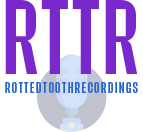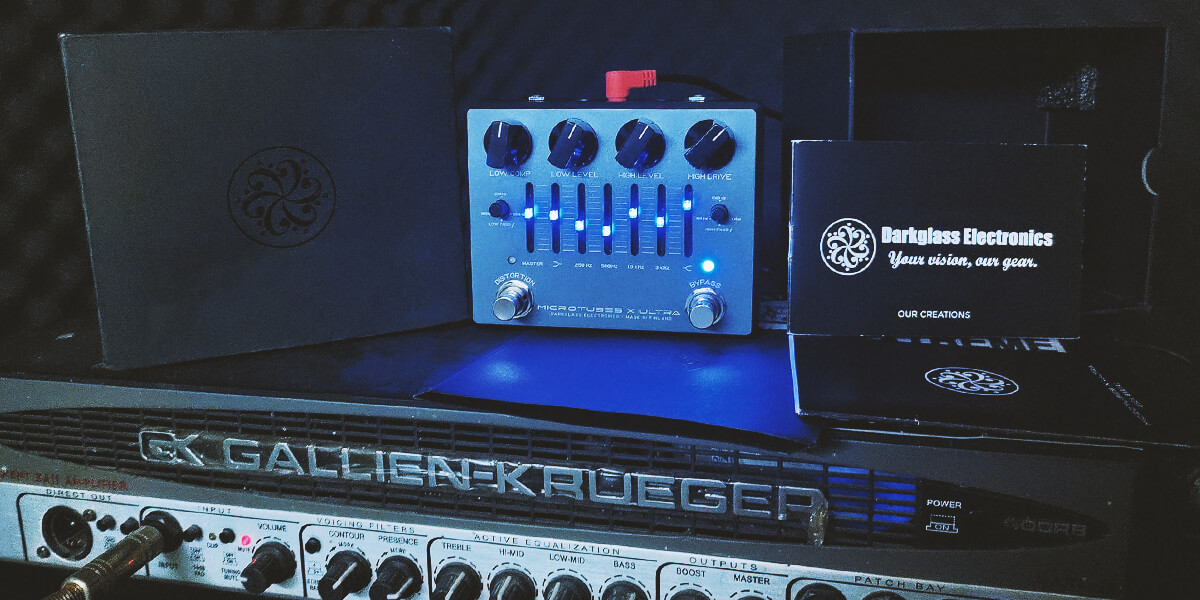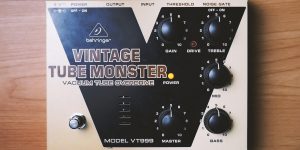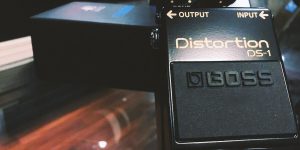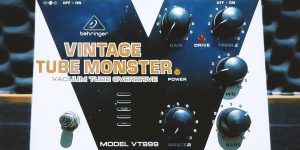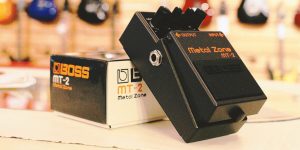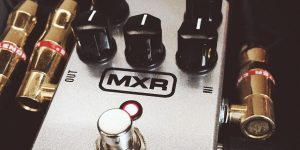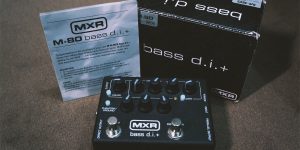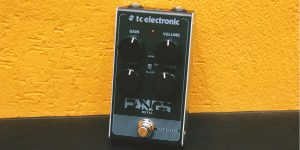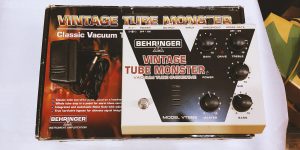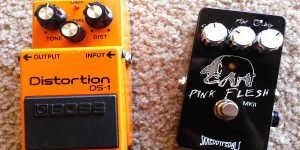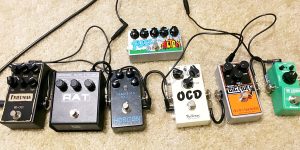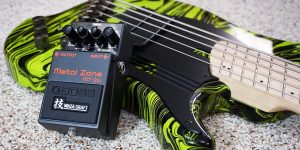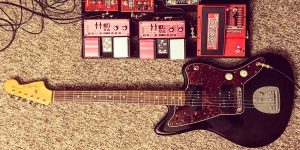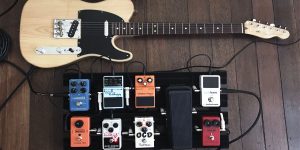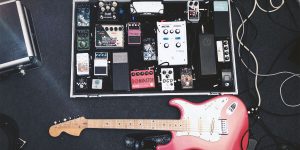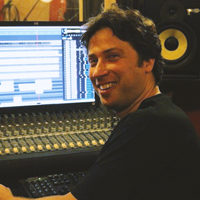Any pedal can be connected to a bass guitar. Still, some have more flexible settings that will allow you to carefully adjust the level of overdrive and overall sound quality on the bass. Distortion on bass has been used since the 60s, so it’s a long-time practice that is used for low-frequency amplification. And I offer you a list of the best distortion pedals for bass, which will help you to achieve the desired sound.
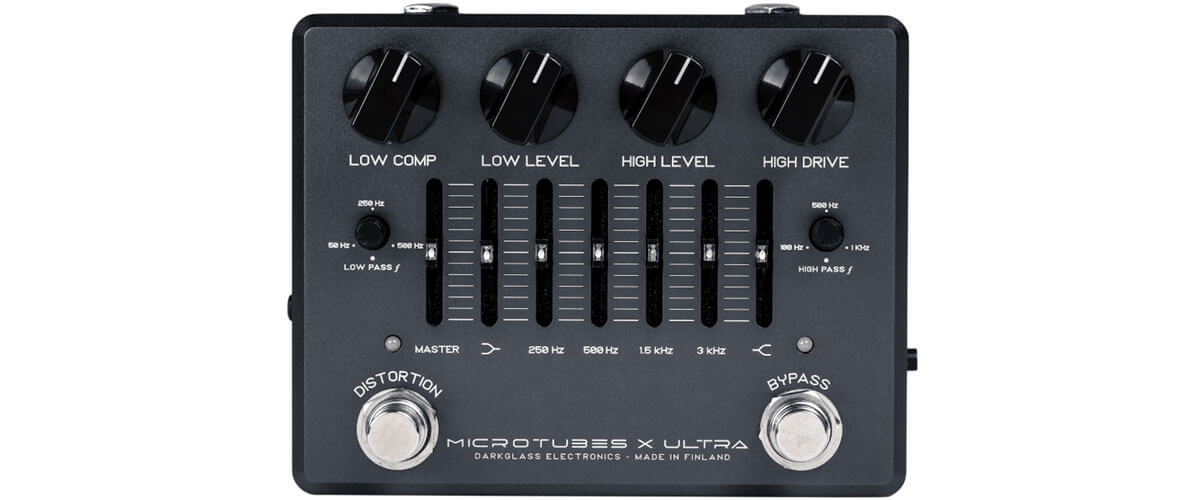
Budget distortion pedal comparison table
| Name | Controls | Connectors | Power Supply | Review |
|---|---|---|---|---|
| Darkglass Microtubes X Ultra best overall | high pass freq, high drive, high level, low pass freq, low comp, low level, distortion | input jack: 1/4-inch, output jack: 1/4-inch, DC IN jack, direct output: balanced XLR, headphones: 3.5mm stereo output, aux: 3.5mm stereo input, USB type B | DC adaptor (9.6V) | Review |
| Boss MT-2 for metal | pedal switch, tone, level, dist, EQ mid freq, EQ high/low freq | input jack: 1/4-inch, output jack: 1/4-inch, DC IN jack | Alkaline battery (9V, 6LR61) or Carbon-zinc battery (9V, 6F22), AC adaptor | Review |
| MXR Bass D.I.+ | pedal switch, distortion, phantom/ground, bass, mid, treble | input jack: 1/4-inch, output jack: 1/4-inch, balanced output: XLR, DC IN jack | battery (9V), DC adaptor (9V) | Review |
Best distortion pedals for bass reviews
Darkglass Microtubes X Ultra – best overall
Darkglass Electronics, known for the quality of its products, created the Microtubes X series in 2018. The Microtubes X7 was among them. But in this Darkglass Microtubes X Ultra review, I will tell you about an even more versatile model than the X7, which is its modified version. It's a versatile bass amp pedal that includes a DI box, distortion, and EQ, as well as some additional features to create the perfect instrument for bassists. At the same time, with all its advanced features, it has remained compact. So let's take a look at the details of the X Ultra so you can see just how good it is for you.
Build and design

The small body (4.92x3.77x2.24 inches) in graphite color accommodates a huge number of toggles, connectors, and switches. On the left side panel, there is a Direct output XLR for connecting to loudspeakers or mixing consoles, and a Cab sim, which bypasses the digital circuits if necessary, and the pedal receives a signal with zero delays. On the right side panel, you will find a Micro USB input for PC/Mac connection and settings with the Darkglass Suite program and Ground Lift. Finally, the top panel allows you to connect the pedal to the circuit via the standard Input and Output, as well as plug-in Headphones (1/8" stereo jack), Aux-in (also 1/8"), and connect to a power source.
The X Ultra's front control panel is pretty simple and intuitive: metal round Distortion and Bypass buttons, Low Comp, Low Level, High Level, and High Drive control. And that's not all! A 4-band equalizer, flanked by a master volume and two shelf frequencies, two footswitches that allow you to turn on/off the EQ and distortion section. And the EQ, shelf, and master volume sliders are illuminated when turned on, making the pedal easier to control in the dark. And all these at a pedal weight of 0.94 lbs. I think it's great, and in the next section, I suggest looking at some Darkglass Microtubes X Ultra features.
Features
Microtubes X Ultra is a multifunctional pedal for bassists. That's why the bass and treble control in it is separated with two filters, which allow you to simultaneously achieve aggressive distortion and, at the same time, fat sound. That is, the treble signal is distorted (compressed) by the CMOS circuit, while the bass signal (the actual bass) is kept clean and then processed by the built-in variable-level compressor. You get maximum control and have a wide range of tones in the bass frequencies.
The 6-band graphic equalizer is incredibly flexible. You have treble and bass bands, as well as sliders for 250 Hz, 500 Hz, 1.5 kHz, and 3 kHz. I've tried several different guitars and compositions and got great results in every case. In addition, the Microtubes X Ultra has a cabinet impulse response simulation, which has already won several awards. Using this feature, you can send the sound of a cabinet with a microphone directly to a PA system or recording device. And with the headphone pedal, you can play without disturbing others.
Sound
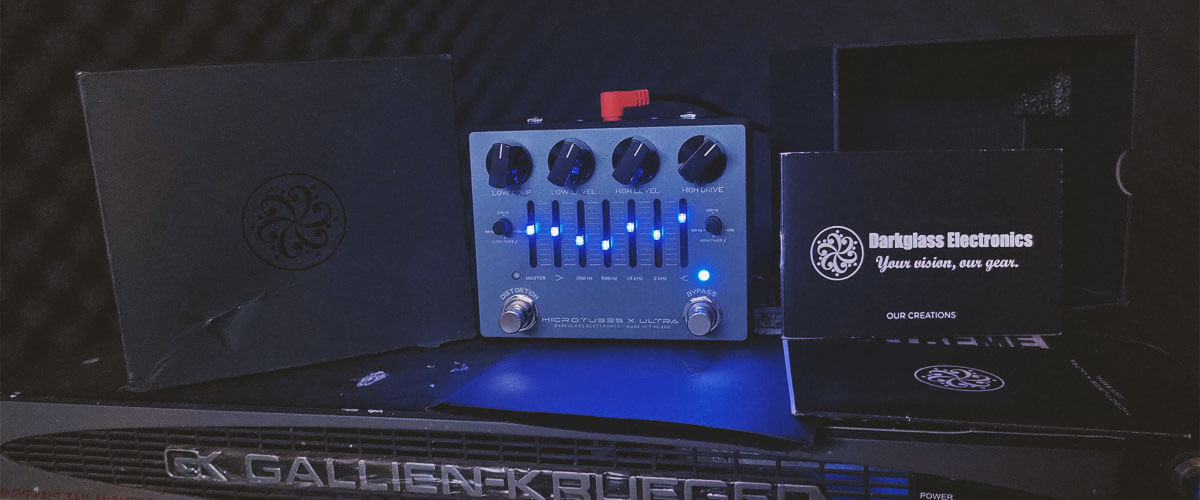
Darkglass Microtubes X Ultra sounds substantial, greasy, and aggressive, delivering full overdrive or exuberant, crisp, crunchy, and dirty when you need it. Its versatility makes it great for studio and live performances or even practice at home. It's essentially a "rig-in-a-box" for modern metal distorted or clean bass.
Yes, it's not a cheap device, but I think it's worth the money. Besides, the X Ultra is made in Finland, and Darkglass is one of the leading brands in manufacturing modern distortion tones. And for all its stuffing, the pedal remains compact and easy to use. So if you want to add some really cool stuff to your pedal collection, it's right in front of you!
Key specs
- Controls: high pass freq, high drive, high level, low pass freq, low comp, low level, distortion.
- Sliders: cab sim, master, low shelf, high shelf, 250Hz/500Hz/1.5kHz/3kHz: +-12 dB.
- Connectors: input jack: 1/4-inch, output jack: 1/4-inch, DC IN jack, direct output: balanced XLR, headphones: 3.5mm stereo output, aux: 3.5mm stereo input, USB type B.
- Power Supply: DC adaptor (9.6V).
- Size (WxDxH), inch/cm: 4.9x2.2x3.7/12.5x5.7x9.6.
- Weight oz/g: 15.1/430.
It is a versatile bass amp pedal that includes a DI box, distortion, and EQ, plus some additional features to create the perfect instrument for bassists. Its bass and treble controls are separated with two filters, allowing you to achieve aggressive distortion while still sounding fat, making the Darkglass Microtubes X Ultra the best distortion pedal for bass guitar. I’m sure many experienced guitarists and music professionals would agree with me.
Boss MT-2 – for metal
In this Boss MT-2 review, I will tell you about one of the most famous pedals but, at the same time, controversial pedals. All guitarists know it, but it has earned absolutely opposite feedback during its history. By the way, this model was released in 1991 but is still one of the best-selling models. Let's look at the Metal Zone MT-2 features; they may help you decide whether this pedal is suitable for you. Already from the name is clear, the distortion pedal will be more for fans of the Metal genre. Even in this case, I recommend hearing it first because the Boss MT-2 sounds specific.
Build and design
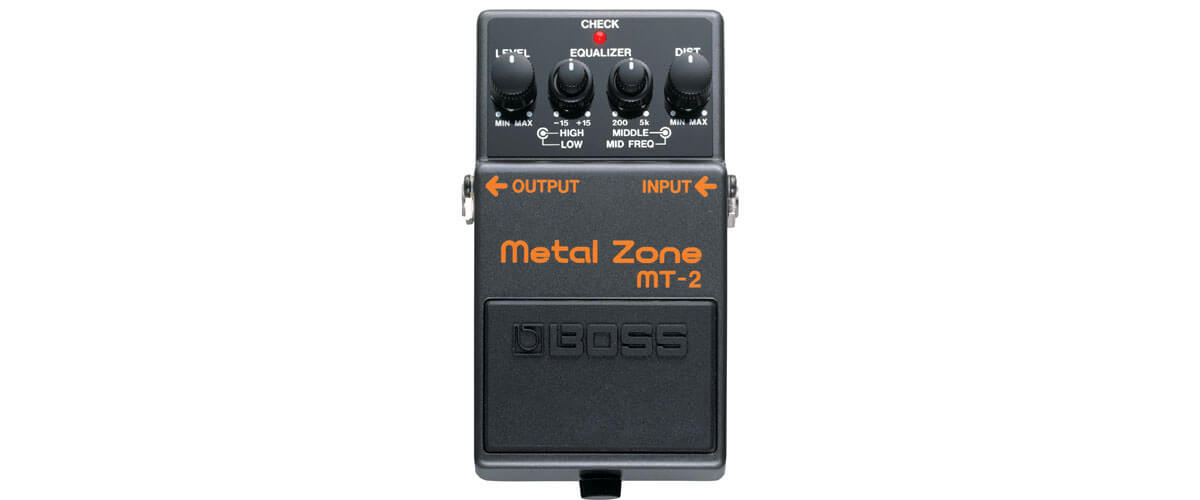
All musicians know Boss pedals as being "eternal" and unbreakable because they are made of durable metal and have a rubberized switch. They last long, and they really do, so you can safely buy the Metal Zone for frequent concert performances. Plus, it weighs 14 oz and measures 2-7/8 inches, 5-1/8 inches, and 2-3/8 inches, making it compact. The MT-2 Metal Zone is as easy to use as most Boss pedals. All 4 knobs are on the front panel and are conveniently located. I will tell you about them in the next paragraph. In addition, there is an on/off pedal, two jacks on the sides, and a CHECK indicator (used to indicate the presence of a check battery). You set this pedal once before using it, and don't touch it again during playing.
Features
The Boss MT-2 is a pedal with a two-stage distortion circuit and multiband EQ and has a lot of tuning and gain options. You may like it or not, but it is a good device with great features. And whether you like the result of the sound is up to you.
So, we have 4 knobs, and among them, there's no TONE, which is usual for distortion pedals. But instead, we have two EQUALIZER knobs. The EQUALIZER HIGH/LOW knob controls the standard high and low frequencies. The second EQUALIZER MIDDLE/MID FREQ knob is a feature of the MT-2, and once you figure it out and adjust it, you'll reach a new level of overdrive. You'll have to struggle to tune it; the minimal deviations will make your guitar sound different. But the result is sure to impress the listener as well: real, heavy metal, everything is on point here. The DIST and LEVEL knobs do their direct job of boosting volume and distortion.
This model also has True-Bypass, which directs the guitar signal from the input directly to the output. So you can turn the pedal off in a chain without the danger of damaging the instrument. But this only works with small circuits; otherwise, the timbre will dissipate. The Metal Zone can run from a Carbon-zinc battery (9 V, 6F22) or with a Boss PSA 9v power adapter, which you have to buy separately.
Sound
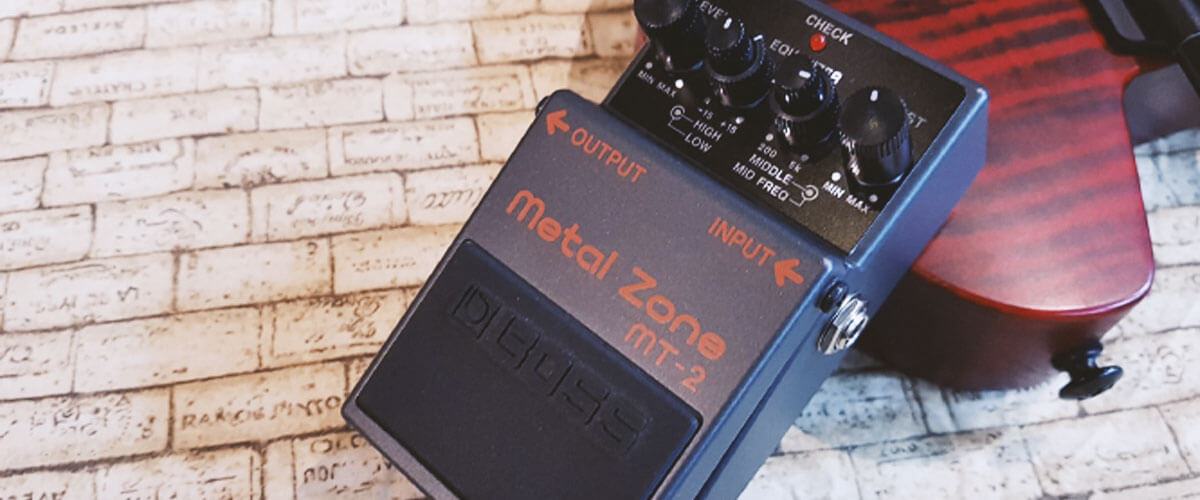
It seems to me that the ambiguous attitude to the Boss MT-2 Metal Zone is connected exactly with its sound because it's hard to complain about the functions. You can achieve extremely aggressive tones worthy of legendary compositions with the right tuning. Indeed, the factory settings are scary-sounding, but with enough time and effort, you can get metal riffs, Metallica-style rhythm tones, and unbelievable gain levels. What else do you need from a distortion pedal? All in all, it's not a device for the lazy ones. But there are still those who don't appreciate the result, and that's because there are no people with the same tastes. Definitely, it will be appreciated by fans of heavy stuff, but it will be good among the guitarists of other genres. So try it, listen to it, and experiment with it. Everything will work out!
Key specs
- Controls: pedal switch, tone, level, dist, EQ mid freq, EQ high/low freq.
- Connectors: input jack: 1/4-inch, output jack: 1/4-inch, DC IN jack.
- Power Supply: Alkaline battery (9V, 6LR61) or Carbon-zinc battery (9V, 6F22), AC adaptor.
- Size (WxDxH), inch/cm: 2.8x2.3x5/7.3x12.9x5.9
- Weight oz/g: 14/385.
The best bass distortion pedal for metal is Boss MT-2. It is a pedal with a two-stage distortion circuit and multiband EQ and has a lot of tuning and amplification possibilities. With the right setup, you can achieve extremely aggressive tones worthy of legendary compositions. A great option, especially for Metallica-style fans.
MXR Bass D.I.+
Many names come to mind when it comes to effect pedals for bass guitars. MXR, which has long honed its craftsmanship in producing these devices, is also among them. But in this MXR Bass D.I.+ review, I propose to consider the advantages of the model, which is a direct injection box (direct input box) for bass, with which you can connect the instrument to the microphone input of the mixing console without distortion, signal loss, noise, and interference. It also functions as a preamplifier. Cool stuff. But let's make sure of it.Build and design
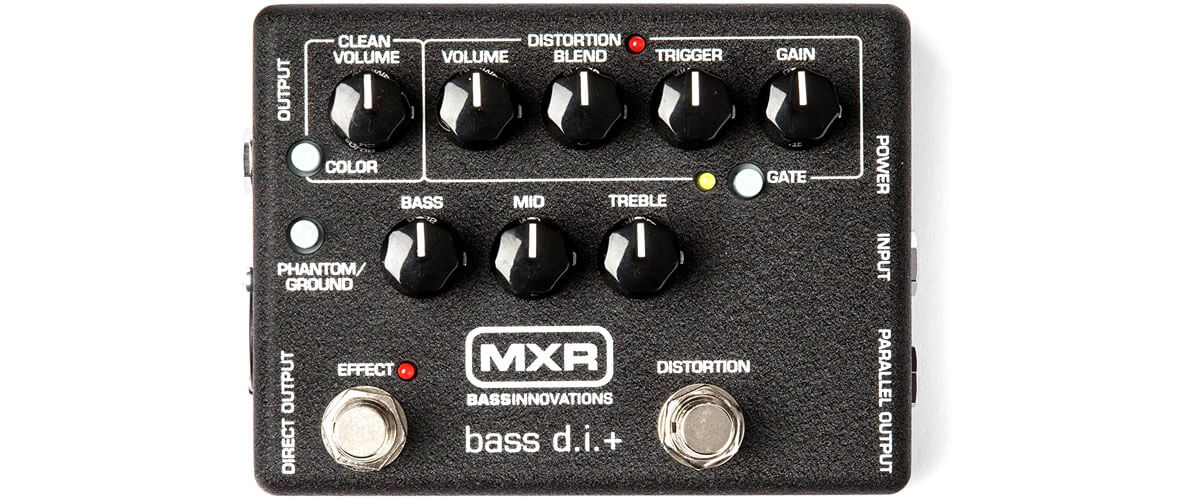 The quality of the DI box inspires confidence- the manufacturer definitely made an effort. The black metal case with reliable switches measures 1.5", 4.9", and 3.6", which makes it portable. All of the controls on the MXR Bass D.I.+ have luminescent signatures, which means you'll quickly figure out what they're for and can navigate even in the dark, and there's a 9V battery compartment on the bottom. It is the only plastic part that I would treat with care. Though, it's pretty sturdy too.
On the sides, you will find 2 x 1/4" (Instrumental and Parallel) and 1 x XLR Output (symmetrical), 1 x 1/4" Output, and a 9V DC power supply jack, which is not included. On the front panel, there are metal Effect and Distortion buttons, Color, Gate and Phantom/Ground switches, and Clean Volume, Volume, Blend Trigger, Gain, Bass, Mid, and Treble controls. And now, I will tell you about the purpose of some MXR Bass D.I.+ features in a little more detail.
The quality of the DI box inspires confidence- the manufacturer definitely made an effort. The black metal case with reliable switches measures 1.5", 4.9", and 3.6", which makes it portable. All of the controls on the MXR Bass D.I.+ have luminescent signatures, which means you'll quickly figure out what they're for and can navigate even in the dark, and there's a 9V battery compartment on the bottom. It is the only plastic part that I would treat with care. Though, it's pretty sturdy too.
On the sides, you will find 2 x 1/4" (Instrumental and Parallel) and 1 x XLR Output (symmetrical), 1 x 1/4" Output, and a 9V DC power supply jack, which is not included. On the front panel, there are metal Effect and Distortion buttons, Color, Gate and Phantom/Ground switches, and Clean Volume, Volume, Blend Trigger, Gain, Bass, Mid, and Treble controls. And now, I will tell you about the purpose of some MXR Bass D.I.+ features in a little more detail.
Features
With the Bass D.I.+, you get everything you need for your bass guitar in one small device. The special thing about the pedal is that it doesn't change the instrument's sound. It just lets the signal through, matches the impedances, and converts the signal to symmetrical. So you can connect it to other instruments, not just the bass! You also don't have to worry about the pedal's battery running out and the studio not having an outlet. Using the XLR (+48V) phantom power jack, you can connect the MXR Bass D.I.+ to your mixing console. When you use Clean mode, it gives you volume and equalization adjustments. When you press the Color button in this mode, the pedal makes frequency corrections, activating the preset equalizer settings. You get the precise timbre and powerful sound of your instrument. To see how good this feature is, I'd suggest trying it out with different guitars because, in my opinion, it doesn't work for all of them. Set the Gain and mix it with the raw signal with Blend - this will give you some "ball." The Distortion will provide a tight retro sound with great upper harmonics, but don't forget to adjust the Trigger and turn on the Gate to suppress noise.Sound
 The sound of the MXR Bass D.I.+ is warm and tight. The passive pickups produce a warm, round sound, while the active pickups produce a solid, punchy sound. It's great for classic rock, pop, and country because the pedal provides quality extraction of your bass guitar's transparent signal or growl. Its old-school tones will also be good in jazz and blues. It's not just a DI box; you also get a quality two-channel preamp with clean and distortion channels. Its build quality gives you the confidence that it won't fall apart after frequent use- it's just a great bass guitarist's helper. Still, not everyone likes the retro sound, so try out the pedal before you buy it. Nevertheless, I'm sure it will appeal to many. And given its affordable price, it could compete well with many devices of its rank.
The sound of the MXR Bass D.I.+ is warm and tight. The passive pickups produce a warm, round sound, while the active pickups produce a solid, punchy sound. It's great for classic rock, pop, and country because the pedal provides quality extraction of your bass guitar's transparent signal or growl. Its old-school tones will also be good in jazz and blues. It's not just a DI box; you also get a quality two-channel preamp with clean and distortion channels. Its build quality gives you the confidence that it won't fall apart after frequent use- it's just a great bass guitarist's helper. Still, not everyone likes the retro sound, so try out the pedal before you buy it. Nevertheless, I'm sure it will appeal to many. And given its affordable price, it could compete well with many devices of its rank.
Key specs
- Controls: pedal switch, distortion, phantom/ground, bass, mid, treble.
- Distortion blend: clean volume, volume, blend, trigger, gain.
- Connectors: input jack: 1/4-inch, output jack: 1/4-inch, balanced output: XLR, DC IN jack.
- Power Supply: battery (9V), DC adaptor (9V).
- Size (WxDxH), inch/cm: 4.9x1.5x3.6/12.4x3.8x9.1.
- Weight oz/g: 12.3/348.
Add overdrive to bass guitar with MXR Bass D.I.+. It is a direct box through which you can connect your instrument to the microphone input of your mixing console without distortion, signal loss, noise, and interference, and it serves as a preamp. The result is great for classic rock, pop, and country because the pedal provides quality extraction of a transparent signal or growl of your bass guitar. It’s a great all-round option!
FAQ
When is bass guitar distortion used?
In Metal, the extra gain will be blurred into the overall sound of your band, so it’s not necessary either. On the other hand, a solo will sound fine with distortion, but try not to overdo it. A boost during a riff will also sound great.
In any case, nobody can forbid you to use this effect where you want, if you like it. Or not to use it where you think it’s inappropriate despite the original composition. But will it be the same for your listeners? You’ll know the answer to that question when you try it.
What happens if you use too much distortion on the bass?
Should I practice bass with distortion?
So what will you end up with when you practice with distortion? The gain. It’s important to understand that distortion amplifies absolutely everything, even the things you don’t want. That’s why it’s essential to learn how to hold the tone. Bending depends on it, making it easier for you to hear the difference between the “guide note” and the one you’re bending. This is also a very useful practice for chord practicing, note holding, and achieving clean distortion playing. There’s no need to be afraid; just take your time.
